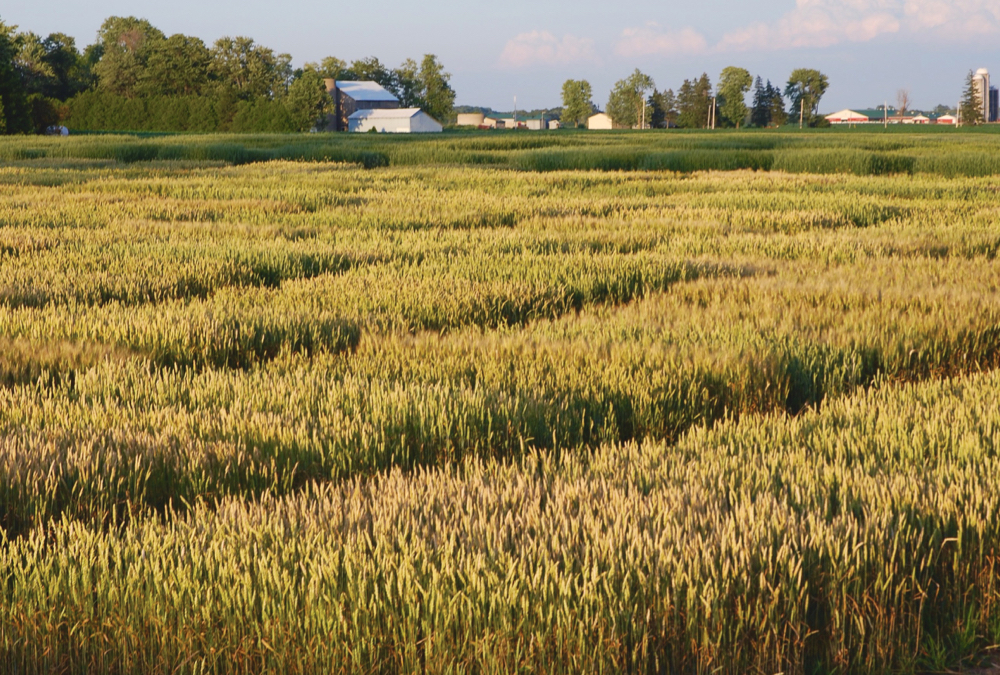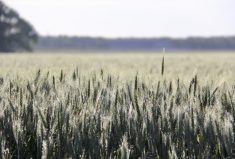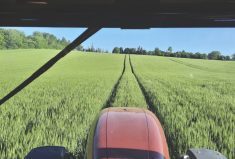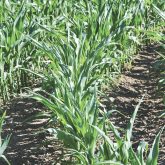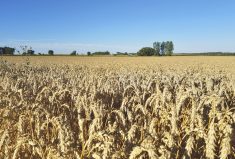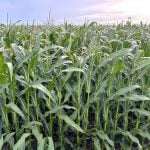Bioceres, an Argentine biotech company, has released a genetically modified wheat variety that is both drought-tolerant and resistant to glufosinate-ammonium. Known as HB4, it was approved late in 2020 although it still faces a number of significant hurdles, first of which is convincing Brazil, Argentina’s largest export market, to accept the innovation.
Also, of course, there’s the issue of winning over end-users and consumers.
Will they win?
Read Also

Producers aren’t panicking over tariffs and trade threats
The influence of tariff and trade uncertainity on farm business decisions.
Wheat has been left behind in the technological revolution that has transformed corn, soybeans and canola. It’s not surprising, perhaps. Wheat has a history as the staff of life, and there’s a reverence about it that puts it in a different category than other field crops.
Science has something to say about it as well. Wheat is the most complex in terms of its genetic structure. It contains three distinct genomes totalling more than 16 billion base-pairs (for comparison, humans boast about three billion).

But technological hurdles tend to crumble these days, and in 2018, the international science community finally completed a 13-year race to sequence the crop’s DNA, which will enable further exploration of genomic improvements in wheat, possibly leading to innovations through CRISPR and other forms of gene editing.
“That’s one of the reasons why it’s taken so long to get to this point,” says Ellen Sparry, general manager of C&M Seeds and president of Seeds Canada. “That’s been the challenge with traditional ways of introducing traits naturally. It’s taken until the wheat genome was sequenced to take progress to the next level.”
Wholesome and good
Despite the technological opportunity, though, there’s still that issue of wheat as an emotional and political issue. Sparry notes that in discussions within the wheat industry, she’s heard wheat being referred to as “a religion.” An anti-GM organization — GRAIN.org — published an online petition in November 2020 titled “Hands off our bread,” listing 20 reasons why the HB4 variety should be rejected.
In Canada, wheat varieties must be registered with the Canadian Food Inspection Agency (CFIA) before they can be introduced, and end-users of wheat have a voice in deciding whether a variety actually brings merit to the marketplace.
Based on consumer concerns, don’t look for a GM-wheat variety from South America to make any inroads in Canada in the near future.

Basic question
The other consideration is agronomic. Is a variety like Argentine HB4 really needed here? A drought-tolerant spring cultivar might spark interest in parts of Saskatchewan where they get 10 to 15 centimetres (four to six inches) of rain per growing season. But breeding a drought-tolerant, glufosinate-ammonium-resistant winter wheat variety for southern Ontario begs the question of whether it’s warranted.
Dr. Gavin Humphreys worked in Western Canada with what was Agriculture and Agri-Food Canada’s (AAFC) Cereal Research Centre in the 1990s and early 2000s. He worked with Roundup Ready wheat and he wonders about the need for herbicide tolerance, especially given wheat’s ability to out-compete most weed species.
“It’s not as though other chemicals aren’t working,” adds Humphreys, a researcher and wheat breeder with AAFC-Ottawa, where he’s been for the past seven years. “There are also some herbicide-resistant wheats that have been developed using non-GMO mechanisms. In Western Canada, there are at least two Clearfield-resistant wheats. Syngenta has marketed one of them and the Crop Development Centre (CDC) in Saskatoon has marketed one or two varieties that have Clearfield resistance.”

For the seed sector, cereals are also the poor cousins in the return-on-investment picture, relative to corn, soybeans and canola. That leaves most of the development of wheat and other cereals primarily to the public sector. The government is also sensitive to producer needs, market needs and those of the marketers and the industry, so there’s less of a push for it.
“Consumers often view wheat, more so than corn and soybeans, as being more basic, wholesome and directly related to the food they eat,” says Sparry. “In my mind, it’s a question of what will be acceptable to customers. Perhaps it’ll be a GM wheat with a particular nutritional trait — something like Golden Rice — but it’s hard to know what that acceptable trait may be.”
Perceptions becoming reality
Still, Canada, like Argentina, is reliant on trading partners. With HB4’s release, Argentina must worry about Brazil’s acceptance, especially since that country buys roughly 40 per cent of the Argentine wheat crop. The same challenge exists in Canada, with Japan and the European Union holding Canadian wheat — mostly from the West — to higher quality standards, including non-GM specifications.
“I would expect that because of security in the marketplace, the inability for a company to ensure that a GM variety is kept in a completely closed system would create a real push-back,” says Humphreys. “There would have to be a very strong argument made as to registering a GM wheat variety, particularly in Western Canada because of its potential impact on the markets, including those lucrative export markets.”
He also raises a point about the potential — however limited it might be — for cross pollination of a GM wheat variety. Although it’s a self-pollinating crop, Humphreys estimates roughly five per cent of a 20-million-acre wheat crop in Western Canada has the potential to out-cross with rye, triticale or some wild grasses. That means the trait could get out of wheat into other crops or species, adding to the issue of crop security and maintaining markets elsewhere in the world.

Last, there’s the harsh reality of dealing with the regulatory system in Canada, a process which Sparry concedes is difficult, especially with the perception that ours is “progressive.” But compared to many other countries, we’re falling behind.
An additonal challenge is communicating the science around GM and why it’s important for food safety and security.
“It does sometimes feel that public perception carries more weight in the adoption of technologies such as GM than the science behind it,” Sparry says.
But there’s a farm reality too that shouldn’t get lost sight of, she adds. “I hear that more and more on my international travels,” she says. “Other jurisdictions such as Argentina are adopting technology at a faster pace than we are in Canada. The fear of falling behind on a global perspective is real.”


